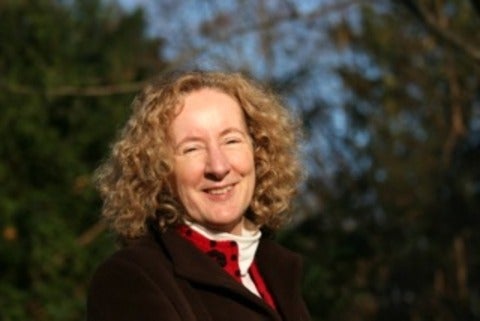Events
Filter by:
Xu: Practical side-channel-free quantum key distribution
Feihu Xu, University of Toronto
In theory, quantum key distribution (QKD) provides information-theoretic security based on the laws of physics. Owing to the imperfections of real-life implementations, however, there is a big gap between the theory and practice of QKD. This gap has been recently exploited by several quantum hacking activities.
Eleftheriadou: How to obtain noiseless amplification (Just not every time)
Electra Eleftheriadou, University of Strathclyde
In practical applications of communication schemes it is often necessary to amplify the transmitted signals. Because of the intrinsic noise due to Heisenberg's uncertainty principle, a quantum signal requires an amplification process which is different than the one used for classical signals.
Andersson: Quantum Digital Signatures
Erika Andersson, Institute of Photonics and Quantum Sciences Heriot-Watt University
Digital signatures ensure that messages cannot be forged or tampered with. They are widely used to provide security for electronic communications, for example in financial transactions and electronic mail. Importantly, signed messages are also transferrable, meaning that if one recipient accepts a message as genuine, then she is guaranteed that others will also accept the same message if it is forwarded.
Chang Liu: Generation and application of narrow-band biphotons in cold atom ensembles
Chang Liu, Hong Kong University of Science and Technology
As a standard method for producing correlated photon pairs (biphotons), spontaneous parametric down-conversion in nonlinear crystal usually has a wide bandwidth (terahertz) and very short coherence time (pico-seconds). Within spontaneous four-wave mixing process in cold atom ensembles, here we present a method for producing narrow-band (megahertz) Stokes and anti-Stokes paired photons.
Joonyeon Chang: Spin controlled electronic devices for the next generation electronics
Joonyeon Chang, Korea Institute for Science and Technology
The conventional electronic devices such as personal computer and mobile phones are primarily based on the control of electron charge in semiconductors. Although the tremendous progress in micro-fabrication technologies has accelerated the miniaturization of electronic devices, the size of devices will soon encounter the fundamental physical limits of that miniaturization. Further scale reduction beyond these limits will require a radical alteration of the concept of functional devices.
Joonyeon Chang: Spin controlled electronic devices for the next generation electronics
Spin controlled electronic devices for the next generation electronics
The conventional electronic devices such as personal computers and mobile phones are primarily based on the control of electron charge in semiconductors. Although the tremendous progress in micro-fabrication technologies has accelerated the miniaturization of electronic devices, the size of devices will soon encounter the fundamental physical limits of that miniaturization. Further scale reduction beyond these limits will require a radical alteration of the concept of functional devices.
Quantum Frontier Distinguished Lecture: K. Birgitta Whaley
K. Birgitta Whaley,
Chang: Cold atoms coupled to photonic crystals: a platform for tunable long-range interactions
Darrick Chang, The Institute of Photonic Sciences
Significant efforts have been made to interface cold atoms with micro- and nano-photonic systems in recent years. Originally, it was envisioned
that the migration to these systems from free-space atomic ensemble or
Vern Paulsen: Quantum chromatic numbers
Vern Paulsen, University of Houston
The chromatic number of a graph has a description as the classical value of a three-person game. If instead one plays a quantum version of this game, then this yields a smaller value--the quantum chromatic number of the graph. However, using the Algebraic Quantum Field Theory (AQFT) model could yield a larger set of quantum correlations, and a different value for the quantum chromatic number.
